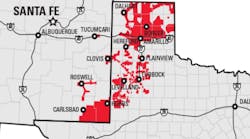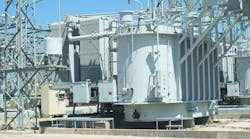California regulators last week adopted “a hybrid approach” to Pacific Gas and Electric Co.’s 2023 general rate case, approving a plan that funds about 60% of the utility’s proposed undergrounding projects in coming years.
The California Public Utilities Commission’s decision Nov. 16 sets PG&E’s 2023 revenue requirement at $13.5 billion, well below the $15.4 billion PG&E executives had requested and a nearly 11% increase from the company’s 2022 authorized revenue requirement. (That $13.5 billion figure will grow to more than $14.8 billion in 2026.) Commissioner John Reynolds, who crafted the compromise that was adopted, said the decision shows the regulatory body’s “commitment to finding a reasonable balance in the face of incredibly challenging circumstances and competing objectives.”
The most-watched element of PG&E’s plan was the proposed burial of roughly 2,100 miles of power lines in high-fire-risk areas through the end of 2026, about 350 miles of which are on track to be completed this year. Patti Poppe, CEO of PG&E’s parent company, and her team had requested $6.4 billion for hardening work, $5.9 billion of which would go to undergrounding, which forecast that the miles of lines to be buried would climb to 450 next year before growing to 550 in 2025 and 750 in 2026.
Several stakeholders, led by consumer advocacy groups, had argued that that plan was too expensive and ambitious and called for relying more on covered conductors to reduce fire risk, albeit to a lesser extent.
Commissioners noted the merits of both sides’ arguments in making their hybrid-plan ruling, which approves a little more than $4.7 billion to bury 1,230 miles of lines and cover another 778 miles through 2026. While not close to PG&E’s request, the 1,230 miles is a notable step up from previously proposed decisions that would have allowed just 200 miles and 973 miles, respectively, of undergrounding work.
A big factor in the CPUC not approving the full 2,100-mile request: PG&E’s plan is by far the largest of its kind and is seen as a test case for the economics and construction pace of large-scale undergrounding, which is today costing the company more than $3 million per mile on average. Commissioners wrote last week that PG&E’s projections it can trim that figure to about $2.8 million by 2026 are “reasonable” and, if achieved, should bolster the company’s standing in future rate requests. The $4.7 billion decision, commissioners wrote, “provides PG&E an opportunity to demonstrate its capabilities to achieve its forecasted decreasing unit costs, to achieve sufficient risk reduction, and to complete its undergrounding work on the timeline forecast.”
Poppe, who last month said that the previously proposed decisions would have traded “safety and reliability for short-term cost considerations,” struck a more conciliatory tone after the CPUC’s ruling.
“We appreciate the Commission for recognizing the important safety and reliability investments we are making on behalf of our customers, including undergrounding powerlines to permanently reduce wildfire risk,” Poppe said in a statement. “Undergrounding is the best tool in the highest fire-risk areas to protect our customers and hometowns and improve reliability year-round at the lowest cost to our customers.”
Shares of PG&E (Ticker: PCG) finished trading last week at $17.92, roughly 7% higher than their closing price of the previous Friday. The move pushed the company’s market capitalization back above $45 billion.


